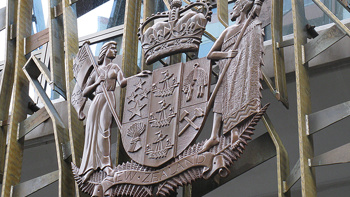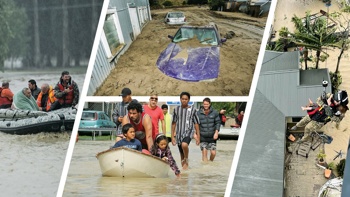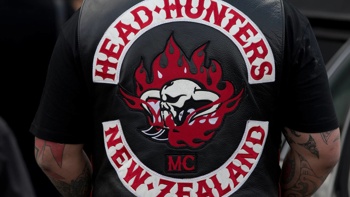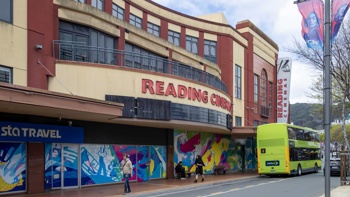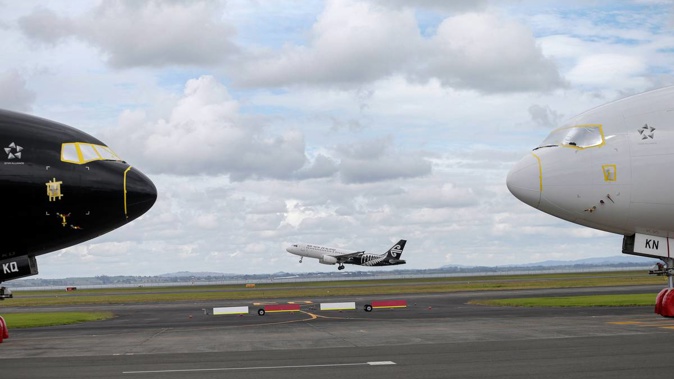
More frequent border testing and a stand-down period before cleaners can board an international flight after it lands are being mooted as further layers of protection against Covid-19.
The suggestions follow the case of the Auckland airport worker, who appears to have caught the virus after cleaning a plane that arrived on April 10 with a passenger who later tested positive.
An investigation is underway into how the cleaner became infected, and it remains unclear whether they had any person-to-person contact with any of the passengers.
"It's a huge challenge to figure out how they got infected because they were doing all the right things with PPE and being vaccinated," Otago University epidemiologist Professor Michael Baker said.
The cleaner might have brushed past the passenger, who had travelled from Ethiopia via Dubai, on an air bridge, or in the aisle inside the cabin.
Leaving the plane empty for a period of time before it gets serviced might help, Baker said.
"I'm not aware of any recorded examples of aerosols being left in an environment and then infecting someone after a significant delay, so that may just be the change that's needed."
There was also merit in more frequent testing of relevant workers, he said. In NSW, for example, high-risk workers - including airport cleaners - are given a less-invasive saliva test every shift.
"There are almost certainly benefits for both New Zealand and Australia in increasing harmonisation of Covid-19 control measures."
The cleaner, who works for Menzies, is the latest of 15 border-related cases since July last year.
She worked three shifts during their infectious period, and 17 of her 25 close contacts are workplace contacts.
Seven of them have so far tested negative, one is being followed up, and others will be tested on day five.
No further locations of interest have been identified beyond those already released: Westfield St Luke's Mall foodcourt, Bunnings New Lynn, and Movenpick Dominion Road, all on Saturday, April 17.
Baker also implored the Government to set up a system where it could monitor high-risk border workers, including when they are tested, and when they should be tested.
"It's critical to find that higher-risk population. It's got multiple occupational groups, and different groups have different levels of exposure and risk - so it's pretty basic to have that.
"You're flying blind if you don't."
The Government can data-match across two registers to see when the 4500-strong MIQ workforce is at work and how often they are tested.
But the Government is reliant on employers to ensure compliance for the 10,000-odd extra border workers who are legally obliged to be tested regularly.
Covid-19 Response Minister Chris Hipkins said there had been not been a system-wide audit of the hundreds of employers at the border to check compliance.
Asked why not, he said: "Just the practicalities and the potential expense involved in doing that ... Ultimately the legal requirement is clear. People need to follow the law here. We don't audit every New Zealander to determine whether or not they are following the law."
He said he is writing to the chief executives of all the agencies working at the border to remind them of their legal obligations.
Hipkins encouraged those who lived with border workers to get vaccinated - so far only 7478 out of 50,000 household contacts of border workers had had two doses of the Pfizer vaccine.
There have been 183,351 doses of the Pfizer vaccine administered as of Tuesday, including 140,580 who had had one shot and 42,771 people - including Hipkins himself - who had had two doses.
He defended the airport protocols that allowed the cleaner to work in the airport's red zone one day and then the green zone on a different day; the worker had also cleaned a plane before it flew to Australia on Monday, the first day of the quarantine-free trans-Tasman bubble.
Hipkins said it made no sense to prevent workers from switching zones on different days.
"They leave work at the end of the day. They go home to their family and they are free to move about in their communities," he said.
"It's very difficult to say that they can go to a concert or a public event, but they couldn't go and work in the green zone."
Australia used the same protocols, he added.
Take your Radio, Podcasts and Music with you






